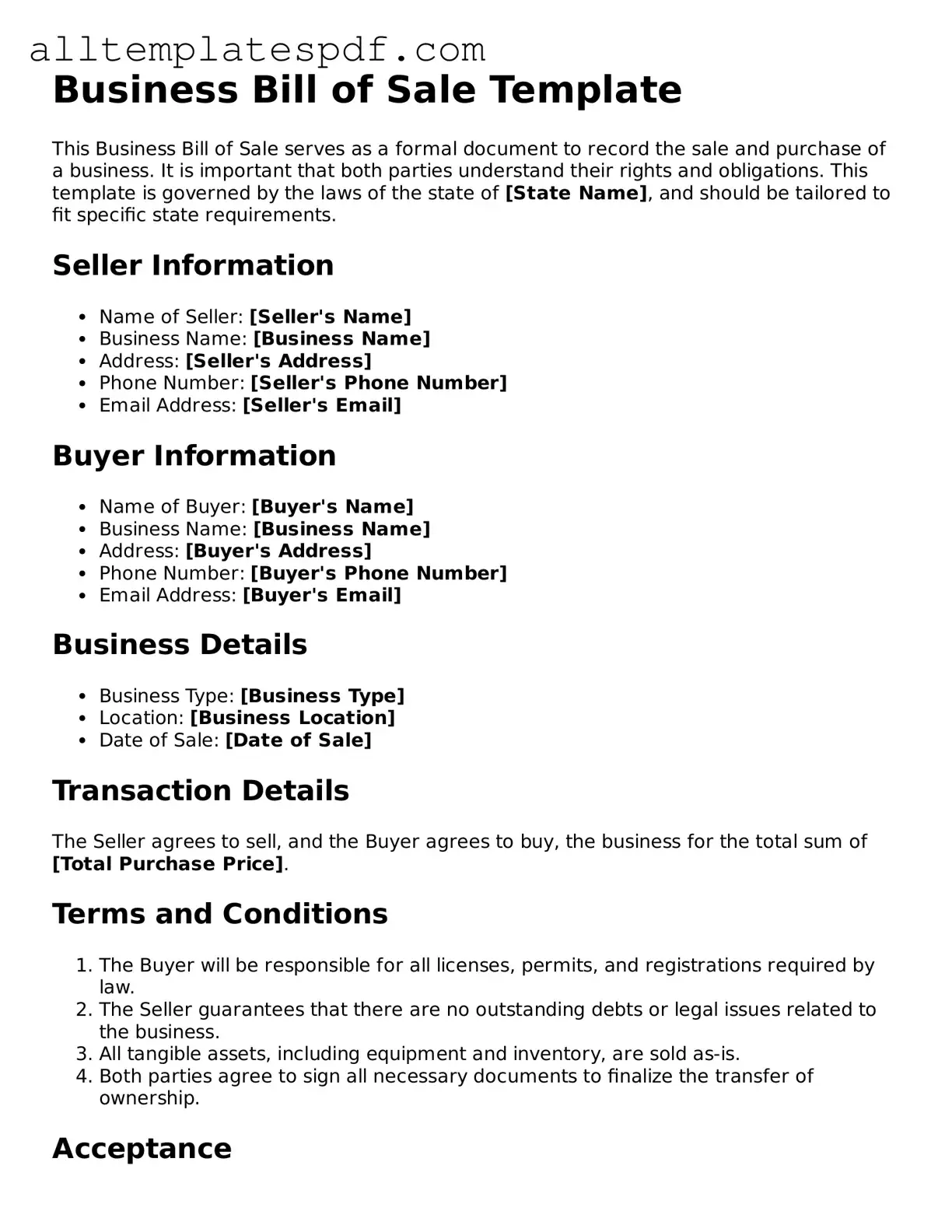Filling out a Business Bill of Sale form is a crucial step in transferring ownership of a business. However, many people make common mistakes that can lead to complications later. One frequent error is providing incomplete information. Sellers often forget to include essential details, such as the business name, address, and the names of both the buyer and seller. Omitting this information can create confusion and may result in legal disputes.
Another mistake involves failing to specify the terms of the sale. It's important to clearly outline what is included in the transaction. This includes tangible assets like equipment and inventory, as well as intangible assets such as trademarks or customer lists. Without this clarity, misunderstandings can arise, leading to potential conflicts.
Some individuals neglect to include the sale price. This omission can cause issues during tax reporting and may complicate the transfer process. Clearly stating the sale price helps both parties understand the financial terms of the agreement and ensures compliance with tax regulations.
Additionally, many people overlook the importance of signatures. A Business Bill of Sale must be signed by both the buyer and seller to be legally binding. Failing to obtain these signatures can render the document invalid, leaving the transaction open to challenges in the future.
Another common error is not keeping a copy of the completed form. After filling out the Business Bill of Sale, it’s essential for both parties to retain a copy for their records. This documentation serves as proof of the transaction and can be invaluable in case of disputes or for future reference.
Some individuals also forget to consult state-specific requirements. Each state may have its own regulations regarding business sales. Ignoring these requirements can lead to non-compliance and potential legal issues. It’s wise to research and ensure that the form meets all local legal standards.
Lastly, many people fail to seek professional advice when needed. While the form may seem straightforward, complexities can arise. Consulting with a legal professional or a business advisor can provide valuable insights and help avoid pitfalls. Taking this step can save time, money, and stress in the long run.
